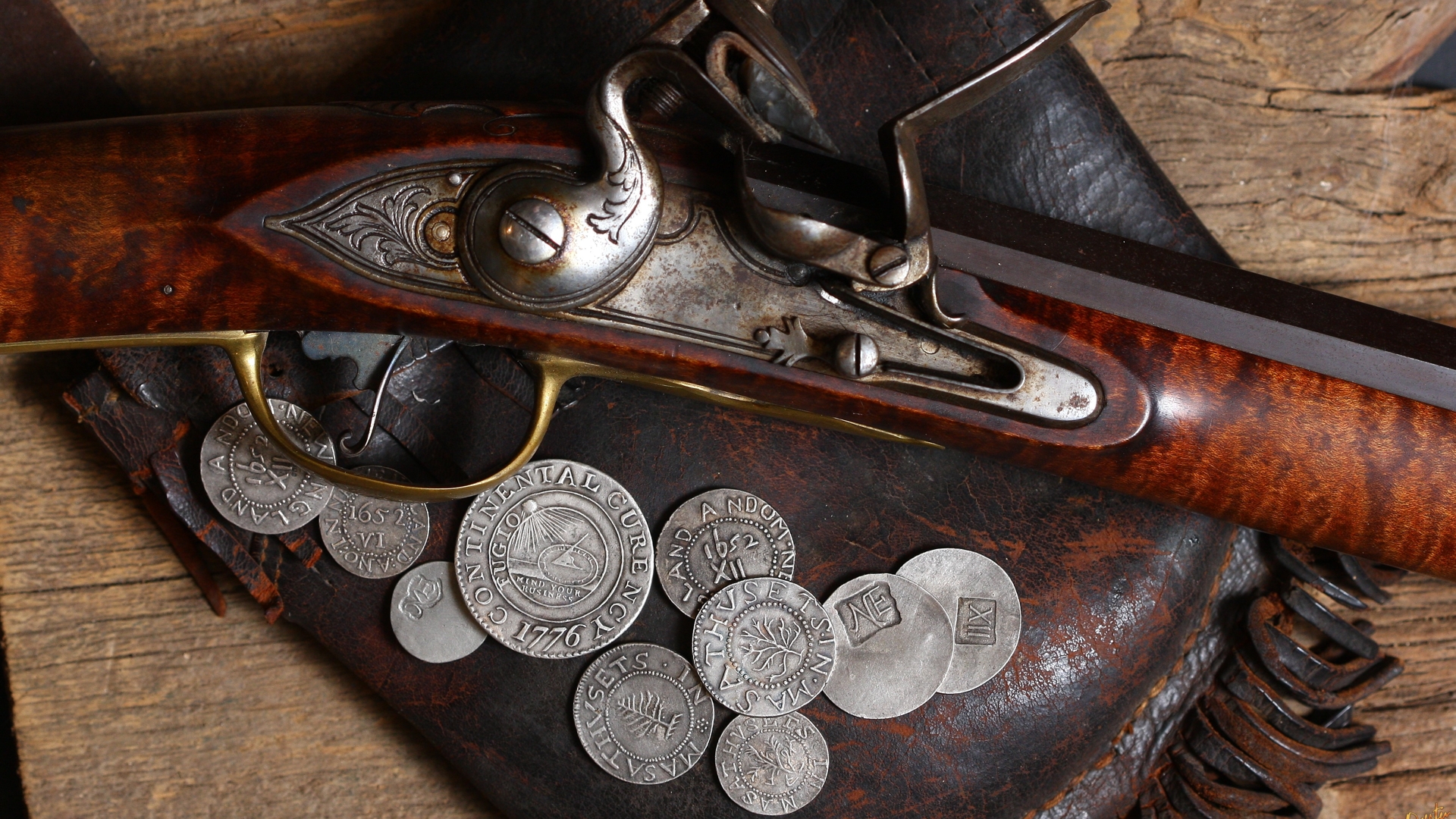Among the rare and interesting historical coins of early America are those currencies from Europe and the mints of Spanish colonies from South America that were used by the earlier settlers of North America, including:
Sommer Islands Coinage (1616)
- The first coins struck for the English colonies were called Hogge Money and were privately minted in 1616 for the Sommer Islands, which are known as Bermuda Islands today. A hog appears on the obverse of the coin and a full rigged galleon on the reverse.
- On his way to the Virginia plantations Sir George Sommers was shipwrecked there in 1609 and the Islands were named after him. They were later name after Juan Bermudez who stopped there in 1515 where he left some hogs behind. By the time Sir George Sommers was shipwrecked there the island was overrun with hogs. This was a welcome food source for the expedition.
Spanish Colonial American Coins
- Spanish silver and gold coins from the Spanish Colonial mints in Mexico, Lima Peru, Bolivia, Colombia, and Guatemala were commonly used in Colonial North America. The Spanish 8 reales milled dollar also known as the ”Pillar Dollar” and “Piece of Eight” and its fractional parts ( 1, 2, 4 reales) cut from the 8 reales coins were widely used in the colonial era. In 1776 the Second Continental Congress gave the Pillar Dollar the status of legal-tender making it America’s first silver coin. The legal tender status stood until 1857, and the Pillar Dollar served as a model for United States Silver Dollars.
Silver Coinage of Massachusetts (1652-1682)
- The Massachusetts Bay Colony Court granted permission in 1652 to have dies prepared for silver coinage because there was a shortage of coins in the colonies. England did not have enough of their own coinage to send to the new world.
- The first coins that were struck in English Colonial America, at Boston, Massachusetts, by John Hull in 1652. Known as New England Silver Coinage, these include: New England, Willow Tree, Oak Tree, and Pine Tree coinage.
Lord Baltimore Coinage (1658)
- The second Lord Baltimore received from King Charles I of England a grant for a new province to be named for Queen Mary, designated “Terra Maria” or Maryland. The first coins struck in England specifically for a British American Colony. The number of coins minted was small and by 1700 they had largely disappeared from circulation.
- The obverse is the bust of Cecil Calvert, the second Lord Baltimore of Maryland.
- The legend on the reverse is from Genesis I, 28: “Benedixitque illis Deus, et ait: CRESCITE : ET : MVLTIPLICAMINI,” translated “and God blessed them and increase and be multiplied and fill the earth.
Saint Patrick Coinage (1641-1642)
- Mark Newby who immigrated to America from Dublin, Ireland in 1681 brought with him a quantity of copper halfpenny pieces believed to have been struck in Dublin, Ireland.
- In 1682 the General Assembly of New Jersey made the Saint Patrick halfpence legal tender. Newby as member of the West Jersey Legislature influenced this act.
- Obverse: King David kneeling and playing a harp. The legend FLOREAT REX (“May the King Prosper”) is separated by a crown.
- Reverse: St. Patrick with a crozier in his left hand and a trefoil in his right. He is surrounded by people. At his left side is a shield of Dublin. The legend WCCE GREX (“Behold the Flock”).
American Plantation Tokens 1688
- Under a 1688 franchise granted to Richard Holt, an agent for the owners of several tin mines, the tokens were struck in almost pure tin in England for the British colonies. The Plantation Token value was 1/24 of a real and authorization of their distribution is unknown. One was found in an excavation in Jamestown, Virginia and some in excavations in London.
William Wood’s Rosa Americana Coinage (1722-1724, and 1733)
- William Hood from England, obtained a patent form George I in 1722 to make coins for Ireland and the American colonies. Rosa Americana were struck in three denominations, halfpenny, penny, and twopence.
- The obverse has the head of George I with the legend GEORGIUS D:G MAG:BRI:FRA:ET:HIB:REX (“George, by the Grace of God, King of Great Britain, France, and Ireland”). Common for both Rosa Americana and Hibernia pieces.
- The reverse has a rose with the words ROSA AMERICANA UTILE DLCI (“American Rose Useful and Pleasant”)
William Wood’s Hibernia coinage series (1722-1723)
- Struck for Ireland about the same time as the Rosa Americana series. They were unpopular in Ireland when they were introduced. The halfpenny and farthing made their way to the American colonies.
- The reverse has a seated figure with a harp, the word HIBERNIA and the date.
Voce Populi Hibernia Coinage 1760
- Halfpennys and farthings were struck in Dublin and some found their way to colonial America.
Virginia Halfpenny 1773
- The Virginia Halfpenny was authorized to be struck in 1773 by the Crown. Five tons around 672,000 coins arrived in Virginia around February 1774. Without instructions from Britain to distribute the coins it wasn’t until November of 1774 that they started to be released for distribution.
- Obverse: King George III facing right with legend GEORGIVS III REX
- Reverse: The coat of arms of the House of Hanover.

